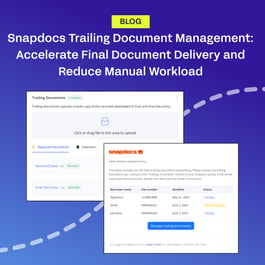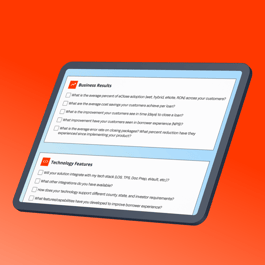This article is part of our educational series on the five key factors that determine how digital your mortgage closings can be, known as e-Eligibility.
For more information, download the full eBook or get your free e-Eligibility assessment to determine how digitized each loan in your portfolio can be.
Most lenders know they must digitize mortgage closings. But digitizing closings isn’t simple. Besides complying with ambiguous local regulations and sifting through conflicting and fragmented data, lenders need to be aware of e-Eligibility, or the factors that enable, restrict, and influence the extent to which a loan may be closed digitally.
Here, we’ll cover recording, one of the five factors of e-Eligibility. Recording refers to whether the local county recorder’s office will accept eSigned and eNotarized closing documents for recording. For example, if a county land recorder’s office does not accept eSigned or eNotarized closing documents, a mortgage closing automatically falls within the spectrum of either a wet or hybrid transaction.
If any of the recordable closing documents will be eSigned, the corresponding county land recorder’s office needs to permit the use of electronic recording (eRecording), or have provisions to accept representations of eSigned and eNotarized documents for recording (commonly referred to as paper-out recording).
As of March 2021, 2,217 counties support the use of eRecording, representing more than 85% of the US population. This is great news for lenders and borrowers, and we anticipate more counties will accept eRecording in the coming months and years. However, it is still a critical component when it comes to assessing the digitization of your loan closing: Failure to understand your county land recording requirements can lead to costly delays during the closing process.
The chart below gives lenders a detailed framework for what to consider when assessing County Land Recording.
County Land Recording at a Glance
DEFINITION OF COUNTY LAND RECORDING:
- Whether the county land recorder’s office is able to accept recordable documents that are eSigned and eNotarized
PRIMARY STAKEHOLDERS:
- Settlement agents, county land recording offices
OBJECTS:
- Security instruments (e.g., deed of trust or mortgage) or other recordable closing documents
SYSTEMS:
- eRecording platforms
MORTGAGE CYCLE:
- Post-closing
DECISION POWER:
- None–the county land recorder’s office typically corresponds with the county in which the property is located
BOONS:
- ++ eSigned and eNotarized closing documents accepted for recording
- + Paper representations of eSigned and eNotarized closing documents accepted for recording
DRAGS:
- eSigned and eNotarized closing documents, including paper representations of such documents, are not accepted for recording
SOURCES OF VARIABILITY:
- County, document type, document format, eNotarization type, use of in-state or inter-state notaries, eRecording types, and paper-out recording provisions
PROCESS:
- Copies of eSigned and eNotarized closing documents are electronically submitted to the county land recorder’s office for recording utilizing an eRecording solution, or paper representations of the eSigned and eNotarized closing documents are physically submitted to the county land recorder’s office for recording
CONSIDERATIONS:
There is spectrum as to the extent to which a county might record eSigned and eNotarized closing documents:- The county accepts eRecording for all recordable document types
- The county does not accept eRecording, but allows recording of a paper representations of eSigned and eNotarized closing documents
- The county accepts eRecording, but only for certain document types
- If the county will not accept the eSigned and eNotarized closing document (or a paper representation of it) for recording, that document would need to be wet-ink signed
Transforming a centuries-old process like mortgage closings into a modern experience may seem daunting. We’re here to help. To learn more about the factors that lenders need to consider when digitizing mortgage closings, download our eBook, The 5 Rs of e-Eligibility for Mortgage Closings.
Check out our other blog posts to learn more about each of the five R’s of e-Eligibility:
- Why Lenders are Digitizing Mortgage Closings Today
- Six Obstacles to Addressing e-Eligibility when Digitizing Mortgage Closings
- The Five Rs of e-Eligibility when Digitizing Mortgage Closings
- The Five R’s of e-Eligibility when Digitizing Mortgage Closings: Requirements
- How to Put e-Eligibility for Digital Mortgage Closings into Practice




















